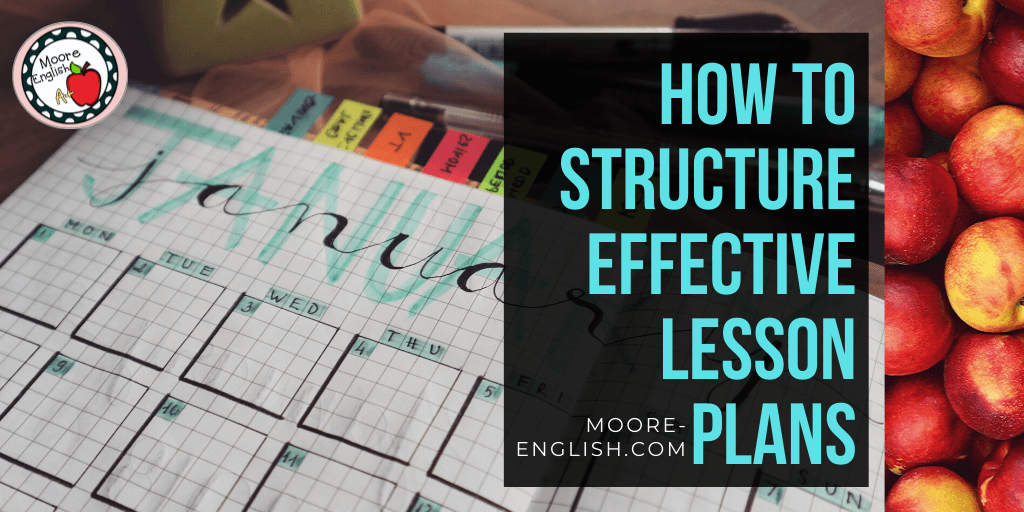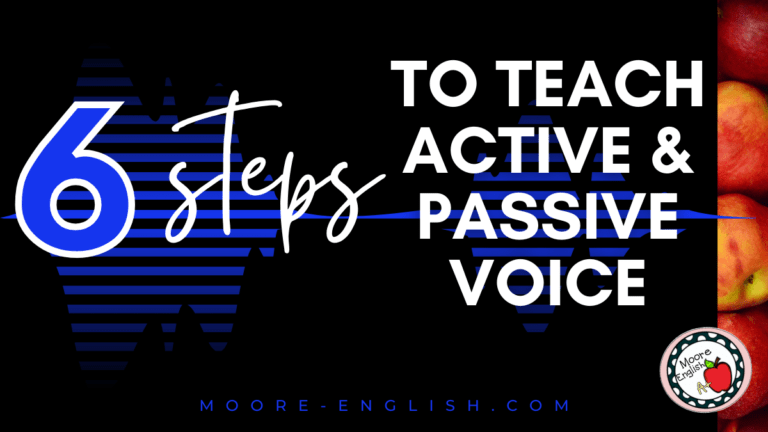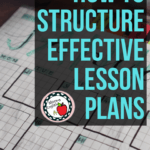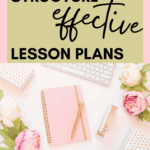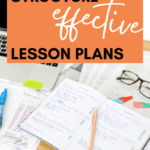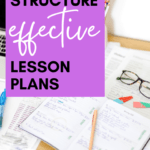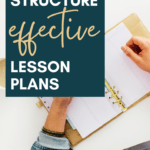I like to watch makeup videos on YouTube: reviews, ratings, and tutorials. However, some of my favorite videos features influencers revealing what’s inside their purses or vanities.
This weekend as I was sinking into a comfortable YouTube spiral, I thought about the classroom equivalent. What part of my classroom could I share with you? My first thought was “What’s inside my desk?” But I don’t have a desk. Then I thought “What’s inside my Google Classroom?” But I’ve pretty much done that. And then I thought about my lesson plan book.
My school, like many others, requires teachers to submit weekly lesson plans. The administrative team has a few requirements for these plans. For example, lesson plans should include standards, instructional activities, and assessments. Since we are a Google school, we are also asked to submit our lesson plans digitally.
Our instructional coaches do a good job sharing potential lesson plan templates, and I have collected lesson plan inspiration here. However, I struggled to find a template that fit my needs. For the first year, I wrote my plans in a paper plan book, scanned them, and uploaded them. But when I went back to reference them the next year, I could not understand my own shorthand. So I knew I needed a digital system.
Eventually, I built the below template in Google Sheets. Next week, I’ll share how I added drop-down menus to make this system efficient and detailed. But this week, I want to focus on the elements of the template itself.

This post this post may contain affiliate links. Please read the Terms of Use.
Lesson Plan Beginnings
As a proponent of backwards design, I begin my weekly lesson plans with the end in mind. In other words, I start with the summative assessment. What standards does it feature? What skills do students need in order to be able to succeed on the test? And how do I get students to that point?
Once I know where my students are headed, I begin to plan the progression of standards, learning targets, and essential questions. In what order should students approach the standards? How do the standards complement one another? And which parts of the standards should instruction emphasize?
For example, CCSS.RL.9-10/11-12.2 asks students about theme and summary. In an ideal world, those two skills would not be collapsed into the same standard, but the Common Core did not ask my opinion. With this in mind, I consider how the standard appears on the assessment. Will students spend more time summarizing or analyzing theme? How does one skill feed the other? And which skill will students need for the next unit or the next year?
Some people might call this teaching to the test, but summative assessments are how my district has chosen to organize curriculum. The ultimate “desired result” for a unit is students achieving standards x, y, and z. And summative assessments are how my district organizes those standards and measures student achievement with regards to specific standards.
Obviously, I want my students to succeed on the assessment and beyond the assessment. Preparing students for an assessment (an admittedly artificial measure of their abilities) does not prevent teachers from getting students ready for life beyond the classroom. And, as a bonus, this helps teachers keep their jobs. A reckoning in how we assess students may be on the horizon, but this is the current classroom reality.
Focusing the Lesson Plan
Once I have the general scope and sequence for a unit down, I can begin to plan the daily activities. When I enter a unit, I have a fair idea of which activities I have used in the past and which ones I have reserved for interventions and re-teaching. But sometimes I still have to seek inspiration from other teachers or look for a new text.
In an effort to be intentional with my lesson planning, I describe each lesson activity and connect it to specific instructional strategies and technology. Naming specific instructional strategies helps me be intentional with my lessons. For example, if I see that I have planned two whole-group lectures back to back, I may realize that I need to alter the lesson plan to incorporate more movement (one of my goals). Similarly, if I find myself relying too heavily on one piece of #edtech, I know it might be time to mix it up.
Additionally, this is when I plan bell work. I primarily use bell work to teach grammar, re-teach a skill, promote independent reading, or practice a new skill.
Nerd Stuff
Some teachers may chafe at being asked to turn in weekly lesson plans. But I figure that if I am being asked to spend my time on this activity, I might as well make sure it is time well spent. In other words, if I am going to lesson plan, I am going to make sure the lesson planning process benefits me and my students as much as possible.
For this reason, I include some deep-dive nerd stuff in my lesson plans. I do not think anyone else includes all of these details, but I am a more intentional teacher because of them. Here are the nerdy details I include:
- Bloom’s Levels, Depth of Knowledge levels, and Rigor and Relevance Quadrants: These metrics help me scaffold appropriately. Putting these indications on my lesson plans helps me make sure student skills spiral upward rather than jumping around too much. This keeps me from creating the kinds of gaps that can lead students to frustration.
- Marzano’s Nine High-Yield Strategies: This is a new metric I am including this year. Including this detail helps me see the overlap between instructional strategy and learner outcomes. It also helps me include a variety of instructional strategies so I am best able to meet the needs of the greatest number of learners.
- Zimmerman and Hutchins’ Keys to Comprehension: Including these details helps me make sure my instructional strategies spiral upward as I ask more of students. In other words, as I ask students to do higher level thinking, I make sure I am providing scaffolding to help them meet their goals. Read about how to incorporate the Keys to Comprehension in writing instruction here.
- Wiggins and McTighe’s Facets for Understanding: This one is my favorite! I have written about my love for Understanding by Design many times before. But the Facets for Understanding are a great complement to the other metrics listed above. In particular, as students reach higher levels of understanding, they are able to practice Perspective, Empathy, and Self-Reflection. These are essential pieces of understanding. In fact, when students reach these levels of understanding, that’s when I know the learning has “stuck.” It’s easy to forget something you do once, but it is much more difficult to forget taking someone else’s perspective, practicing empathy, or using metacognition. For that reason, these are a place where I am constantly challenging myself. I want to bring my students to Perspective, Empathy, and Self-Reflection more often, and including them in my lesson plan reminds me of this goal.
A Lesson Plan Reality Check
When I first started turning in weekly lesson plans, I had serious ambitions but struggled to make them a reality. It took me several lesson plan templates and years of trial and error to figure out how I could include all the required and desired elements. For this reason, next week I plan to share how I created the drop-down lesson plan template that allows me to have detailed lesson plans without spending hours writing them.


Photos from Ivory Mix, Pixistock, and Katie Harp

